

As a new topic in the discourses of computer science, architecture, sustainable development, and journalism, Public Interest Technology (PIT) has yet to be (and may never be) concretely defined across fields. In this three week lab, we developed a working definition to characterize and consolidate our impressions of the topic for the purpose of researching and designing a project that fits the bill. Our definition reads as follows:
Public Interest Technology is any application of knowledge that belongs to no one, excludes no one directly, and that is created with no objective other than to serve and help the intended population. It is meant to protect and uplift the people it is designed for and its success should be measured in terms of empowerment rather than efficiency.
Our interdisciplinary working group and understanding of the human-centered design process inform the structure of the lab and this project. Further, our work is framed by a desire for the research we develop to partner with one of the greatest examples of PIT functioning today: public libraries. Considering PIT in conjunction with public library institutions, the research and design of our project began by exploring three general themes: (1) digital and physical space; (2) community programming; (3) resource distribution (equity and accessibility).
After gathering a thorough understanding of how public libraries operate today (and pre-pandemic), our themes combined forming the general problem we seek to address: the effectiveness and equitability of mobile library services (ex. BookMobiles). Primary and secondary research diverging from this idea include interviews with librarians, architects, sociologists, and anthropologists in addition to literature reviews of PIT and urban equity and programming of specific library systems.
Some highlights from our research that lead to insights and opportunities for further investigation:
More highlights from conducted interviews that led to insights and opportunities for further investigation:
We conducted an interview with My’Tesha Tates and Rachel Stout, heads of Community Engagement at HPL and the main people organizing Houston Public Library Mobile Services. They kindly explained the structure and logistics of HPL’s mobile express:
In order to further understand mobile services outside of the library context, we conducted an interview with Dr. Alan Shapiro, who runs a portable clinic in New York City. The clinic has been mainly used to serve homeless people in need of medical services. Dr. Shapiro gave us some key insights about his mobile medical service and gave us advice as we designed our application:
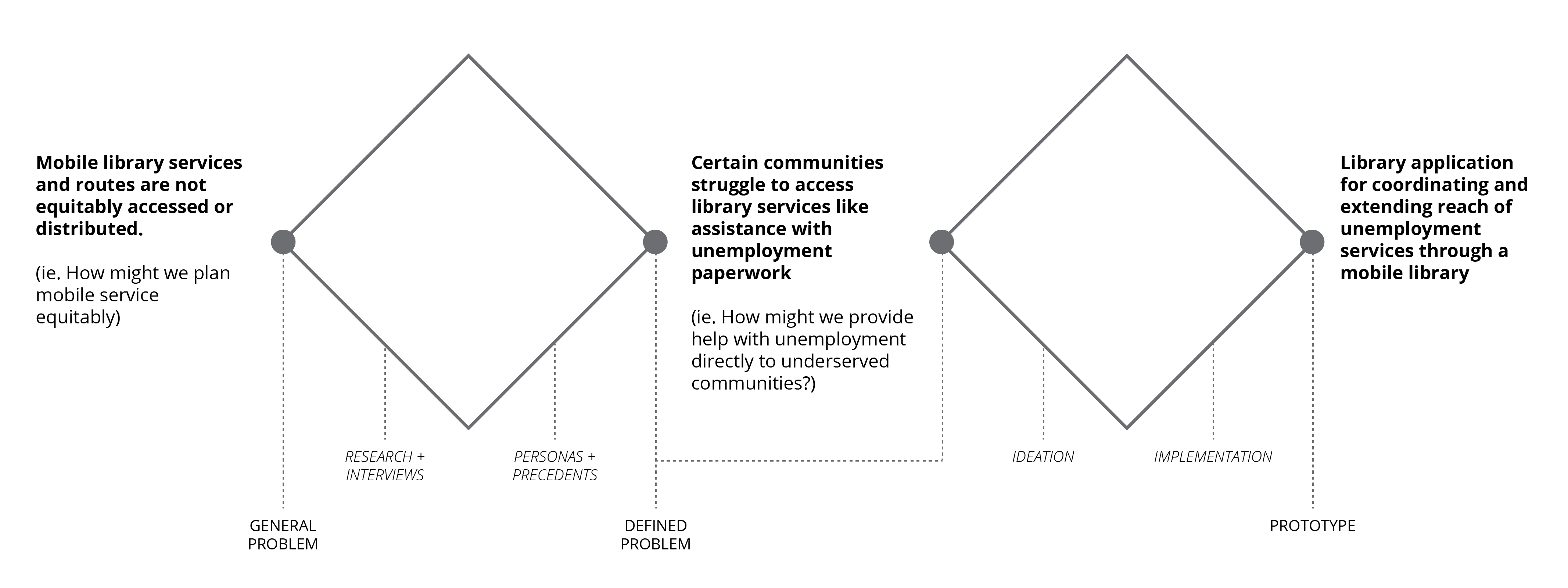
Phase 1 clarifies multiple insights concerning how mobile library services may not be equitably implemented. The history of these services suggest they are not sustainable literally and figuratively-- of the 9,057 public libraries across the United States, only 650 BookMobile programs exist. This number has shrunk in recent decades due to the cost of operation and inability to adapt to the changing needs of library patrons and the public. How and why these services are offered vary greatly between systems too; some are determined by patron requests, others by proximity (or lack thereof) to existing facilities. How might mobile library services be more systematized in order to reach underserved populations and become critical infrastructure of the public library? What are the new or important programs that need to be designed for an adaptive reuse of existing units?
Two needs our project seeks to address stem from these insights as well as selecting the Houston Public Library as our site and the process of filing for unemployment as a use case scenario for our project.
Need 1: Houston (and its surroundings, Harris County) has a low ratio of libraries per capita compared to other popular systems.

Existing public library facilities also are concentrated about the city center making it difficult for certain peripheral areas of lower income or non-white populations to access its services.
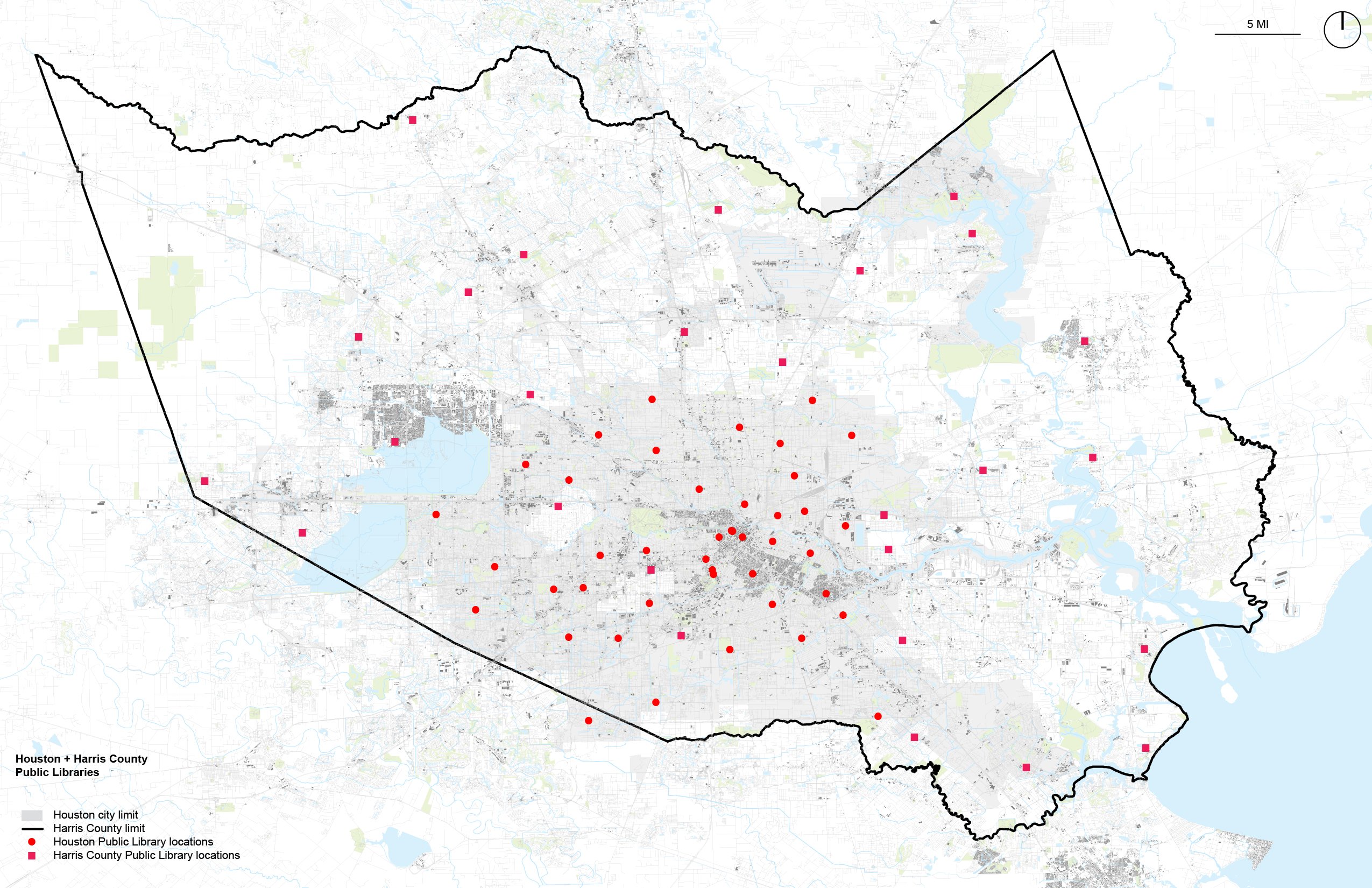
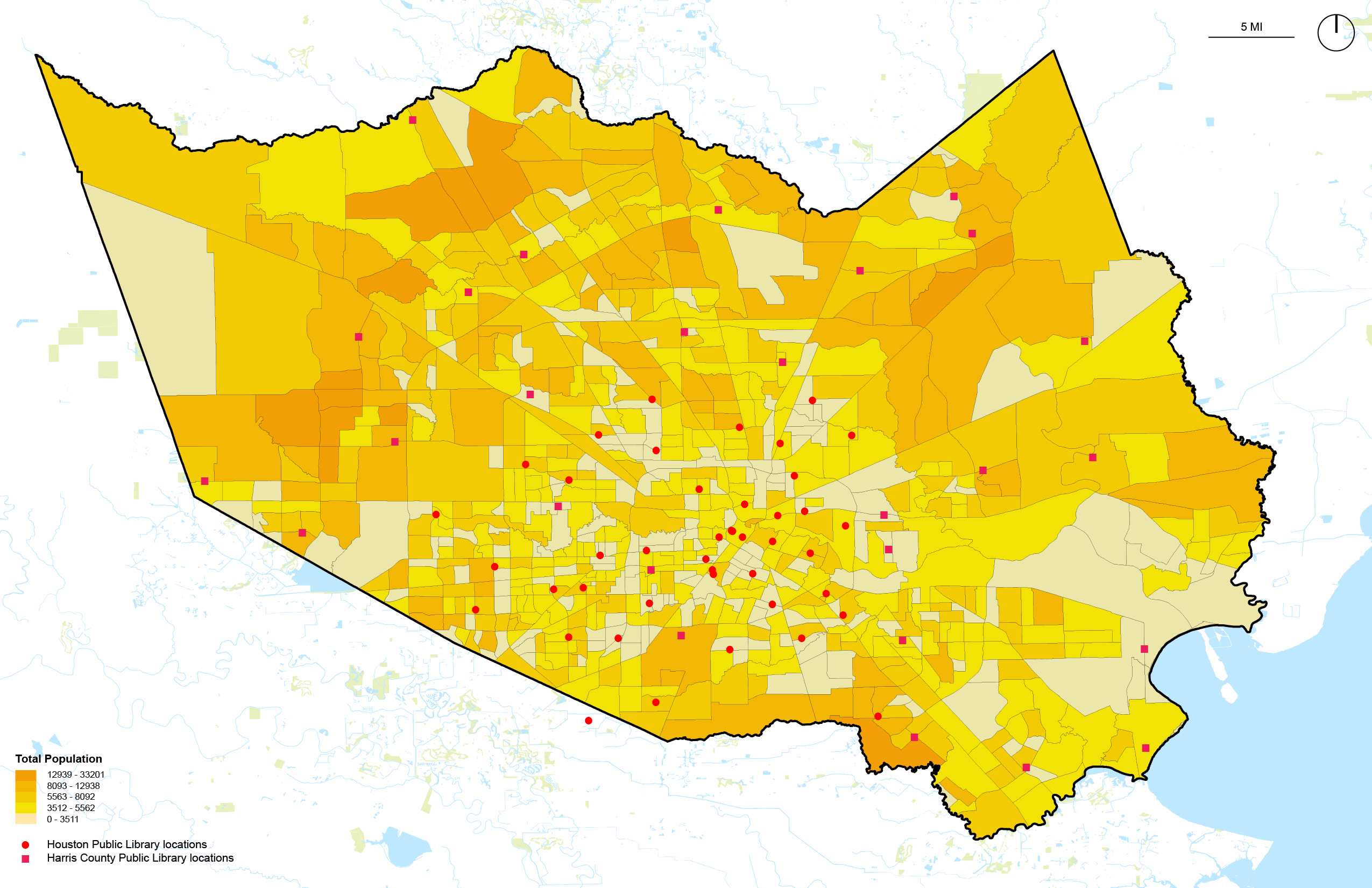
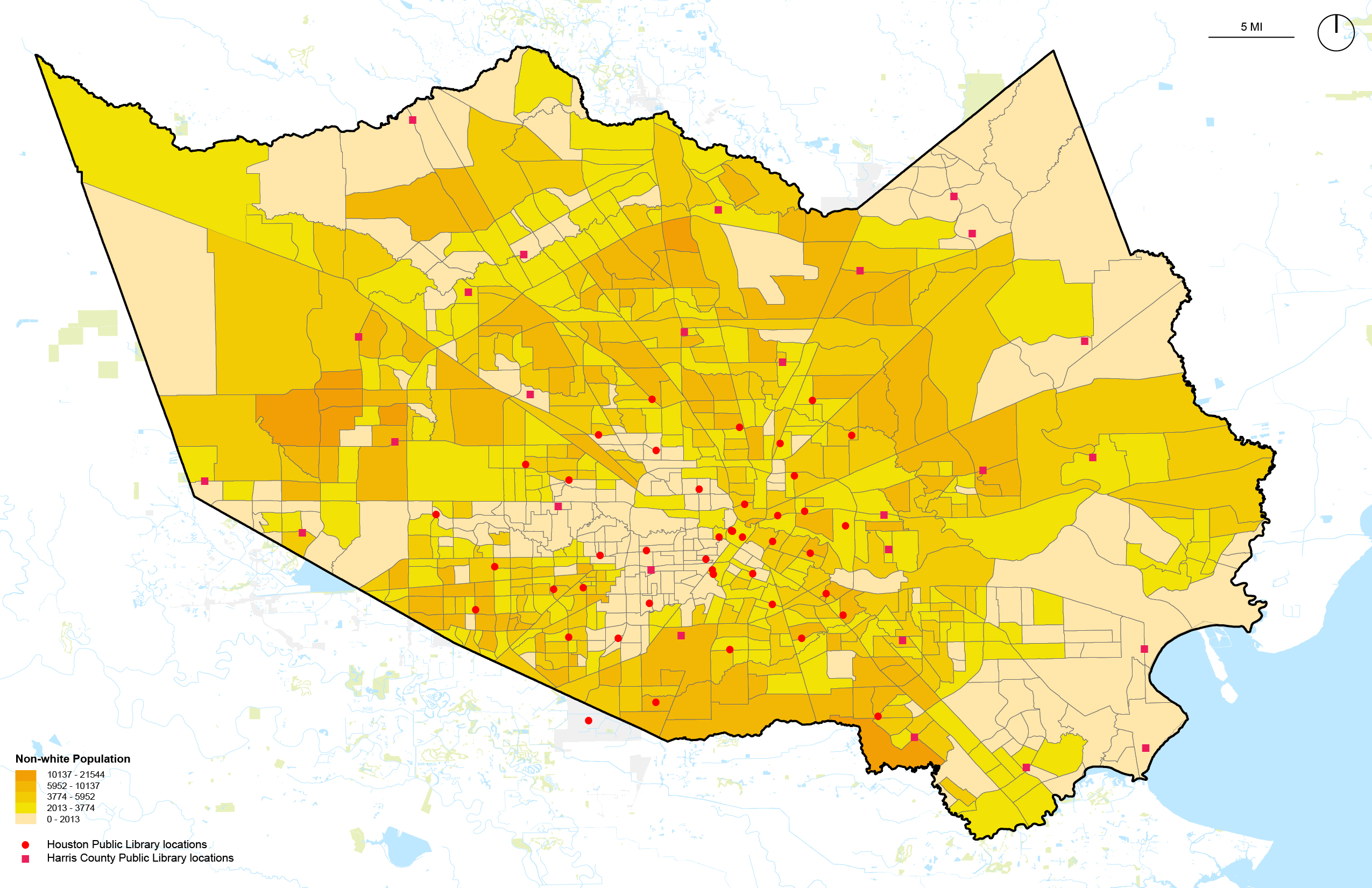

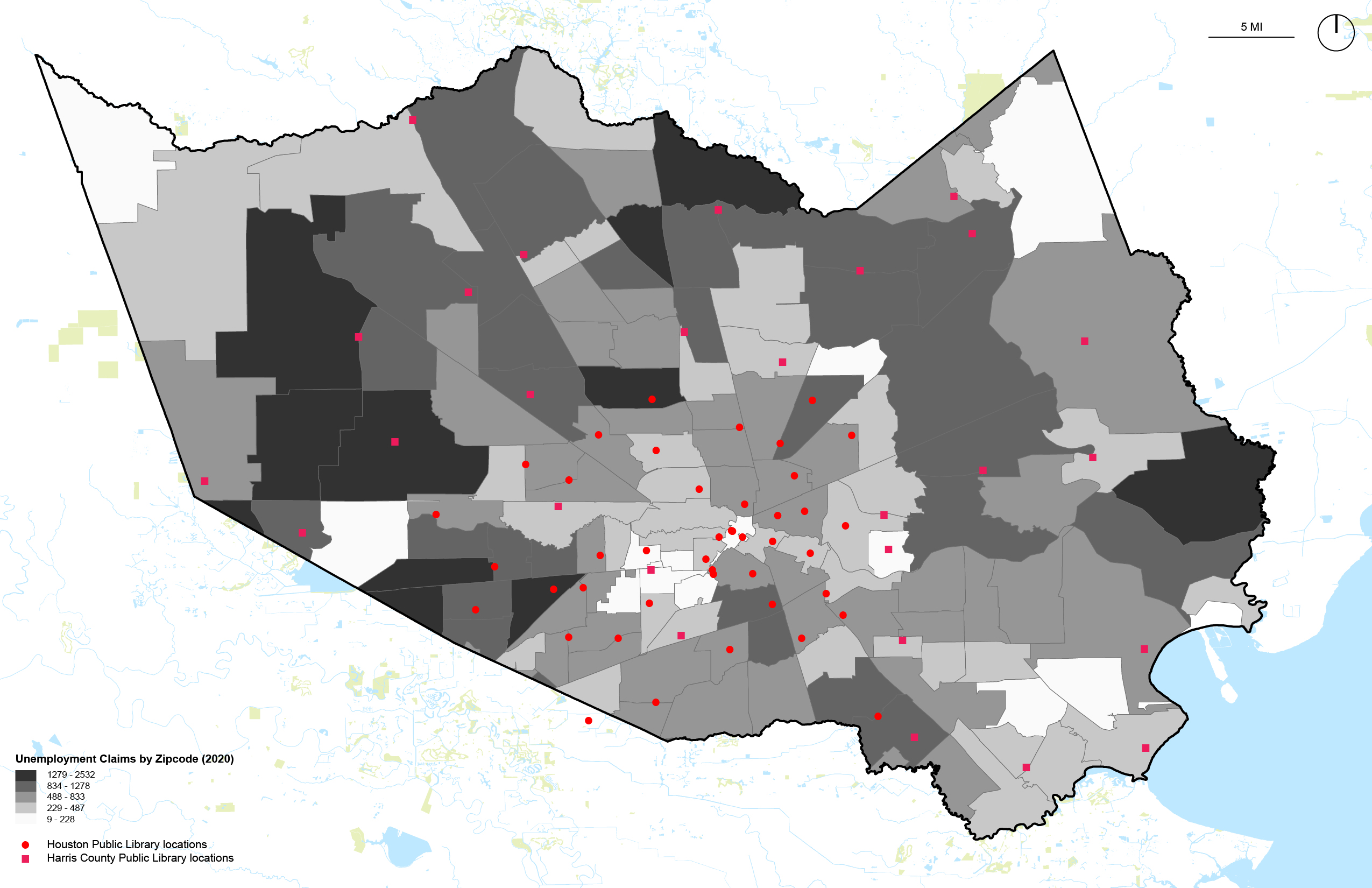
Need 2: Filing for unemployment is a particularly difficult task that public librarians can and do assist their patrons with. With unemployment rates skyrocketing due to the pandemic, there is a current need for an expansion of this aid.
The opportunity presented from our research’s insights appears to be designing a method for the mobile library services to provide assistance with unemployment in Houston and Harris County.
Use case scenario research (steps of unemployment filing) Unemployment in Texas is run completely by the Texas Workforce Commission and due to COVID- 19, is restricted to application by online portal and phone. This further limits the abilities of those who find themselves unemployed or have been economically affected by COVID-19 and must now apply for unemployment benefits. Many who must now endure the struggle of this bureaucratic process are predisposed to limited digital resource access and time/ financial constraints that further complicate their ability to apply and receive these benefits.
The closure of physical locations of the Texas Workforce Commission leaves many individuals seeking to file for unemployment without human guidance through a complicated process. With their only options left being either an automated phone system or an online portal, their opportunities are greatly diminished. Additionally, the latter, which is a significantly clearer system to deal with, leaves those without access to computers with only one solution.
Our app seeks to connect those who are experiencing significant difficulty filing for unemployment with the necessary library resources needed to complete the task and librarians to guide them along the way.
According to the Pew Research Center, nearly 96% of American own a cellphone and 81% have ownership of a smartphone. Taking into consideration what devices users have the most access to, we decided that a smartphone app would allow for most people to access the services we design.
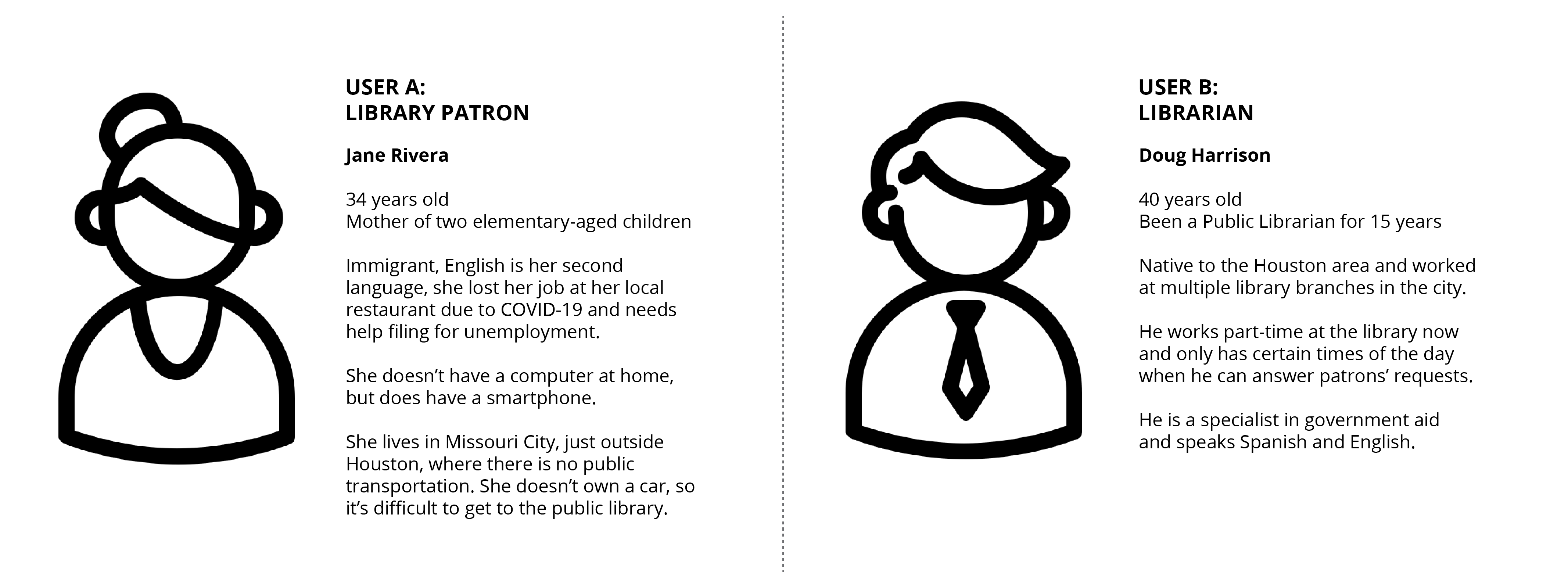
Our project seeks to implement features to serve and inform two different users to better facilitate the distribution of library resources through the Houston Public Library Mobile Services.
Houston Public Library Patron:
User A is a Houston Public Library patron named Jane, someone with access to a smartphone to use the app, but with little access to other resources necessary to successfully navigate society. Since she lives in an area in Houston with no access to public transportation, it is difficult for her to get around and find time to go to the library while balancing taking care of her kids and other responsibilities. Additionally, as she is an immigrant and English is her second language, understanding the already difficult unemployment process is hard for her to manage on her own after losing her job at a local restaurant suddenly due to COVID-19.
Houston Public Librarian:
Our second user, User B, is a part time public librarian named Doug, who is a native of the area and well- versed in the bureaucratic processes involved in filing for government aid. He is also bilingual and is passionate about those who have difficulty completing these troublesome tasks. However, Doug has limited time to operate the Mobile Service, as he has another job, and has difficulty knowing where exactly library services are most needed.
Project:
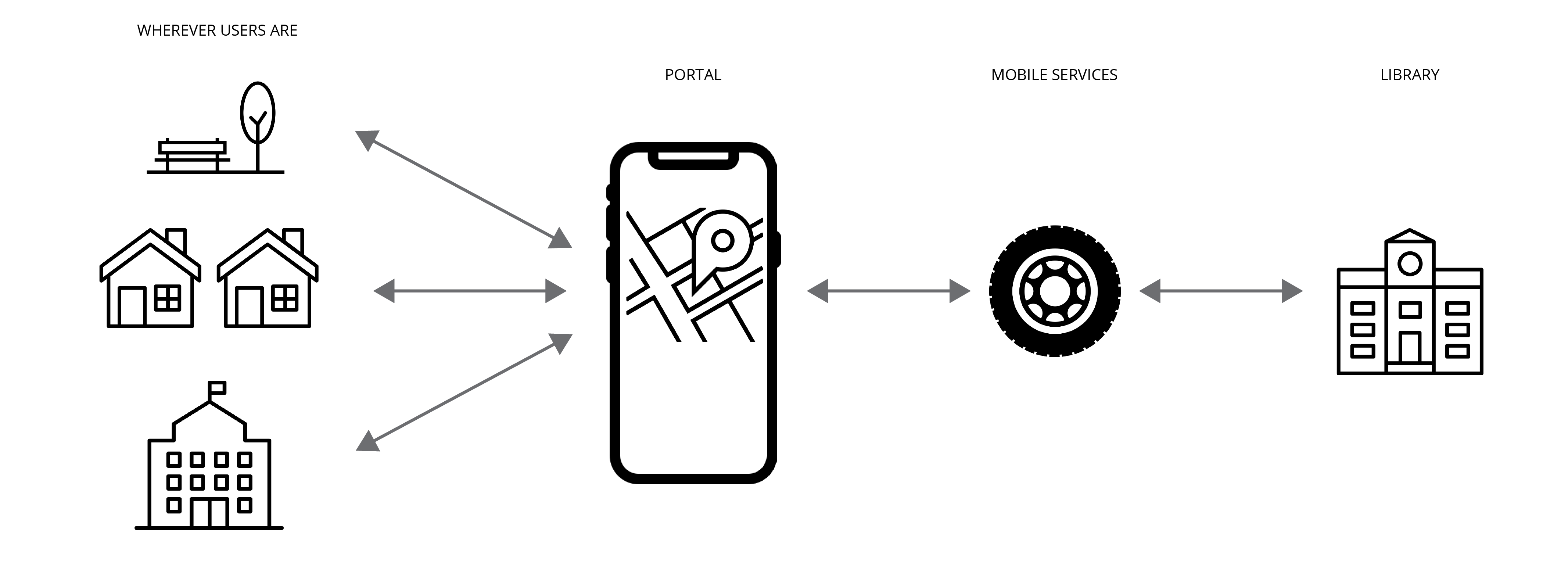
How this app brings us back to our three themes (wrap-up):
(1) digital and physical space
In the early stages of this project, we were interested in the link and expansion of the physical structure of the library. How exactly could we use public interest technology to expand the range that libraries have? We discovered a pre-existing solution, book mobiles, that have the capacity to deliver digital library resources to those most out of reach. However, we also realized through our analysis of this solution that the distribution was still inequitable in our case study concerning the Houston Public Library. Thus, this app seeks to use features such as maps and request forms on a technological platform to facilitate connections between librarians and users to better distribute resources provided by the library.
(2) community programming
By identifying crucial processes that users have trouble navigating, such as the online portals, editable PDFs, unemployment forms, taxes, etc., we developed a platform that provides resources that can be easily understood within a technology that is widely accessible. This same platform connects those in need with librarians and resources that are more difficult to reach. Features such as the request form help keep librarians up to date on what needs their audience has and gives individuals a space to voice their concerns.
(3) resource distribution (equity and accessibility)
The Houston Public Library already has a pre-existing mobile bus service (two BookMobiles), but its current model of responding to patron requests or existing partnered institutions for distributing these resources creates gaps in their solution to do so. This app hopes to supply librarians with a tool that informs them on neighborhoods and locations that need the most help and have the most issues accessing their library resources.